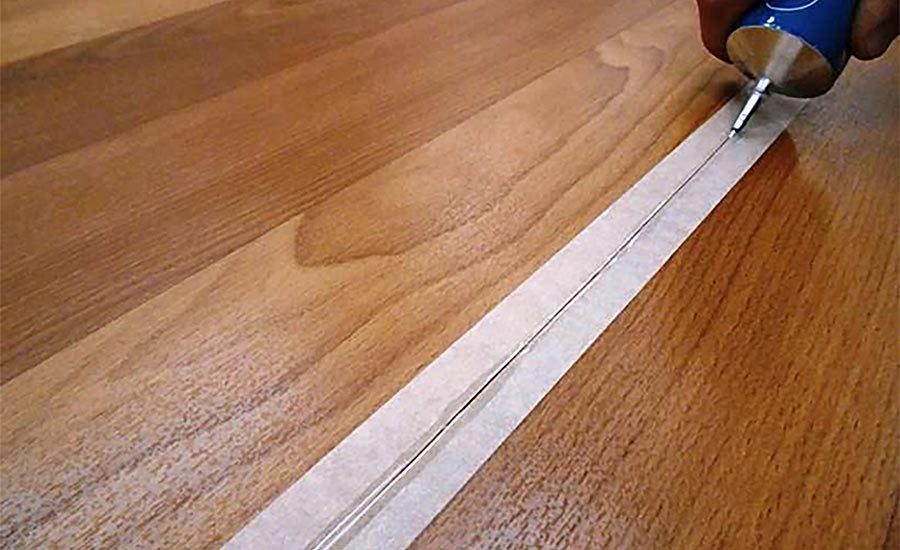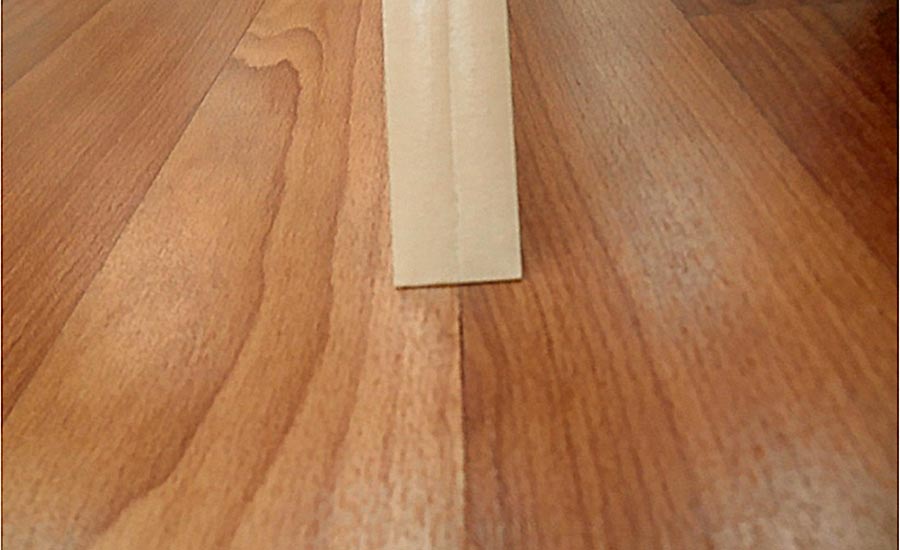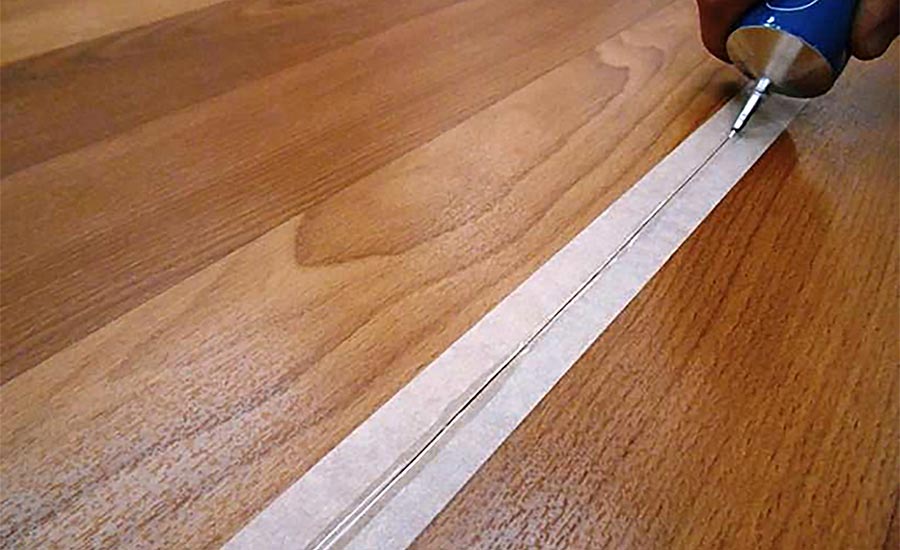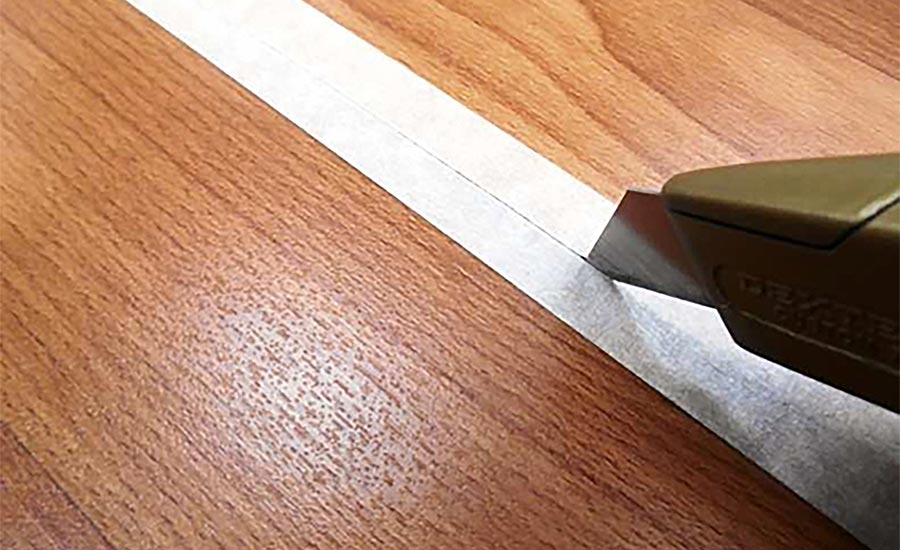Understanding the Cold Weld Process for Vinyl Sheet Flooring

After the cold weld liquid has dried for approximately 10 minutes, peel the tape up and away from flooring exposing the finished seam.
Photo: Don Styka.

If you do not see the cold weld liquid on the masking tape you are not applying enough. Be sure that the tip of the tube maintains contact with the substrate through the entire welding process.
Photo: Don Styka.

After the waiting period, apply a good quality 1” wide white masking tape (not older than six months) along the seam. Using fresh masking tape is important to avoid the tape breaking during the removal process.
Photo: Don Styka.

Carefully cut through the tape along the seam line so the cold weld liquid applicator tip can be inserted between the two sheets of vinyl.
Photo: Don Styka.




Recently, as I was developing a presentation on proper heat welding techniques, the topic of using a cold weld liquid to seal seams on vinyl sheet flooring came up. It was the same comment I’ve heard over the years: “I don’t have installers who are proficient at heat welding, so we will cold weld the seams.”
I understand the techniques required to be successful when heat welding and the on-going challenges locating trained installers qualified to heat weld, however, it’s just as important to use skilled installers when cold welding a seam.
When constructing a seam that is to be heat welded, a gap of approximately 1/64" is required between the two sheets of vinyl as a guide for the guide wheel on the groover. Without this slight gap, the groover can drift or be pushed off the seam line creating issues during the welding process and drastically impact the final visual and quality of the seam.
Cutting the seam for the cold weld process leaves no room for error as any gaps or voids between the two sheets of vinyl will compromise not only the appearance of the seam but also the integrity of the seam for long-term performance. The seam must be cut net as the liquid cold weld material is not designed or intended to fill gaps and voids between the two pieces of vinyl. Not only will these voids be noticeable, the cold weld liquid will not work properly.
To achieve a successful cold weld, you must start with a properly cut net seam. We already know gaps and voids are not good, neither is compressing the seam or cutting it too full which can lead to peaking.
Once the seam is cut net and rolled into the adhesive with a small hand roller, wait a minimum of two hours for the adhesive to dry. This will help avoid wet adhesive being pulled into the seam as the cold weld liquid is applied into the seam.
After the waiting period, apply a good quality 1” wide white masking tape (not older than six months) along the seam. Using fresh masking tape is important to avoid the tape breaking during the removal process. Never use a colored tape, the color pigments in the tape will react with the cold weld liquid and can discolor the seam. The tape should be centered on the seam and rolled with a small hand roller to ensure full contact to the vinyl flooring.
The next step is to carefully cut through the tape along the seam line so the cold weld liquid applicator tip can be inserted between the two sheets of vinyl. Reroll the tape after cutting the tape along the seam line.
Shake the cold weld liquid tube prior to opening. Always hold the tube upward to avoid dripping cold weld liquid on the new floor. If a spill does occur, immediately remove it using denatured alcohol applied to a clean white cloth.
When cold welding (HO) homogeneous sheet vinyl, use a heat gun to warm the material along the seam. This will soften the flooring and ease the insertion of the tip on the cold weld liquid tube.
Insert the tip of the cold weld liquid tube fully into the seam until it makes contact with the substrate. Allow the cold weld liquid to flow down the tip and fill the seam. Working backwards you should see a bead of cold weld liquid that is 1/8” to 3/16” wide on top of the masking tape. If you do not see the cold weld liquid on the masking tape you are not applying enough. Be sure that the tip of the tube maintains contact with the substrate through the entire welding process.
After the cold weld liquid has dried for approximately 10 minutes, peel the tape up and away from flooring exposing the finished seam. Keep all traffic off the floor for 24 hours after the cold weld process is completed.
Please reach out to the flooring manufacturer prior to installation if you have any questions related to proper installation or the cold weld process. I recommend always using professional flooring installers qualified to perform the installation techniques required to achieve a successful installation.
Looking for a reprint of this article?
From high-res PDFs to custom plaques, order your copy today!







.jpg?t=1690771780)





